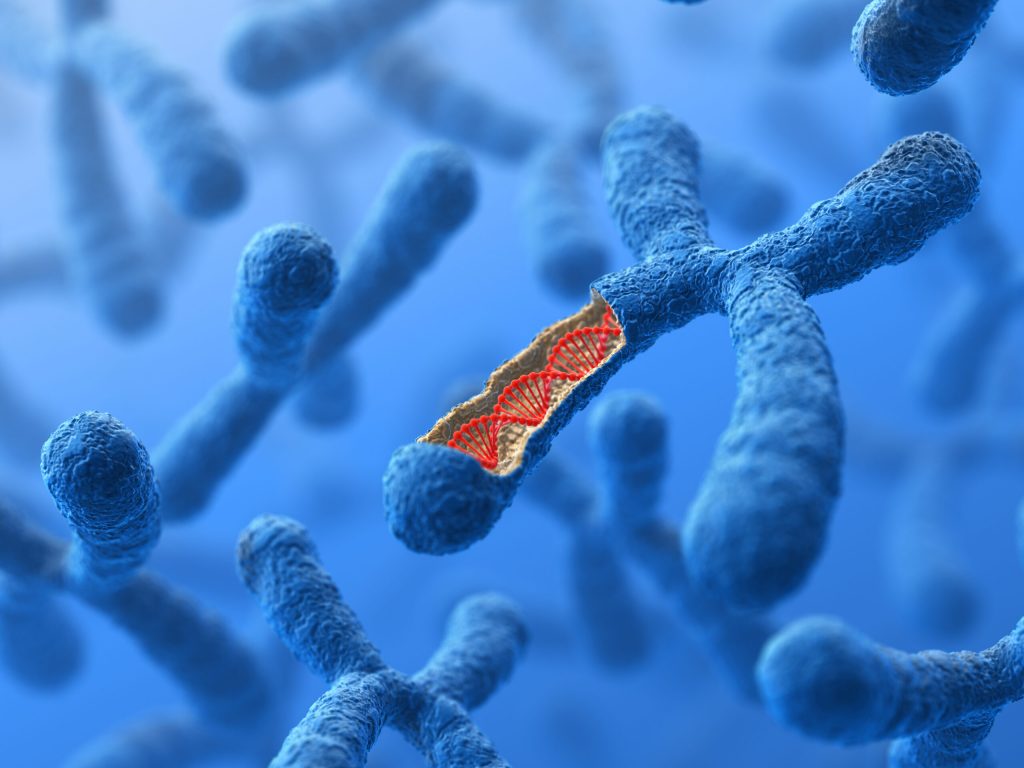
Huh, Who’d Have Thought?
Part Five: Asking for Directions: Sex Chromosome Disorders and Differences Between X and Y Chromosomes

The rock in this photo is located in downtown San Antonio near the Spanish Governor’s Palace and City Hall. It marks the exact halfway point between the Atlantic and Pacific oceans. As you can see, it is a rather unassuming rock, and therefore not easy to find. After trekking and backtracking, I finally liberated the power of my X chromosome and…asked for directions. Although a successful strategy in this situation, the X chromosome is sometimes too good at its job when asking for and following directions.

Here’s an example: I recently asked a colleague where to go hiking in the High Peaks region of the Adirondack Mountains. He sent me a map on AllTrails that clearly showed the trailhead (A) and the peak of Giant Mountain (B). He also included a short side route from B to C, a mere 1.8 miles round trip. Believe me when I tell you that 1.8 miles down and back up a steep valley was one million times harder than climbing Giant Mountain itself—the 12th highest peak of the 46 High Peaks in the Adirondacks. After ungracefully descending the mountain and returning to civilization with cell service, I oh so politely thanked him for the directions. He had no recollection of recommending the side hike. And when faced with the proof that he sent me the map, he laughed at me for following his directions so exactly.
Y Chromosome Direction Disorders
This is a clear case of the Y chromosome being unable to provide clear directions to an X chromosome, even with a high-tech map app! (That’s in addition to not being willing to ask for directions.) This is not the only manifestation of this Y chromosome direction disorder. The lack of the Y chromosome giving clear directions was also pointed out on Monday at the AAEP Annual Convention by Patrick McCue, DVM, PhD, Dipl. ACT from Colorado State University’s Equine Reproduction Laboratory.
McCue described several disorders of sexual development (DSDs) that primarily stem from poor communication from Y chromosomes.
Beginning with the basics, McCue rapidly reviewed reproductive tract development. He said that genetic sex is established at the time of fertilization depending on whether the spermatozoon has an X or Y chromosome. Recall that the Y chromosome has a sex-determining region—the SRY gene.
“In the absence of the Y chromosome and SRY region, ovaries will develop,” said McCue.
Next, the primordial duct systems need to develop into internal genitalia. All sexes have both sets of primordial duct systems. The Wolffian duct is the embryonic precursor to the male internal genitalia. The Müllerian duct is the precursor to female internal genitalia. Males produce testosterone to stimulate development of the Wolffian duct. The lack of testosterone and the production of anti-Müllerian hormone (AMH) suppresses development of the female internal genitalia.
For the external genitalia, lack of testosterone, dihydrotestosterone, and the enzyme 5a-reductase allow female development.
Equine Sex Chromosome Disorders
In sum, this essentially means that, often, if the Y chromosome doesn’t attempt to direct development, the embryo will be female. For example, McCue described the following three DSD cases:
Case 1: 63,X monosomy
In this situation the horse is phenotypically mare. Reproductive examination revealed very small gonads on transrectal exam and a small flaccid uterus but normal cervix, vagina, and perineum. AMH, progesterone, and estrone sulfate were all low, but testosterone was high. Karyotyping (which can be performed at Texas A&M and University of California, Davis) identified 63,X monosomy, the most common chromosomal abnormality of mares resulting from the absence of a second sex chromosome.
Case 2: 64,XY SRY-negative
This horse was never seen in estrus, and the gonads were so small they were extremely difficult to find. The external genitalia and cervix were normal. All ovarian hormones were low, which makes this look similar to 63,X monosamy. Genetic analysis revealed a 64,XY karyotype. But DNA analysis (polymerase chain reaction, PCR) found the absence of the sex-determining region of the Y chromosome (the SRY gene).
Case 3: 64,XY SRY-positive monorchid DSD
This “mare” showed stallion-like behavior and elevated AMH and testosterone levels. This prompted one to think granulosa thecal cell tumor, pregnancy, estrus, anabolic steroid administration, or DSD. Full examination revealed a short, blind-ended vagina and no cervix. An ultrasound exam revealed only a single testis. In this case, because the horse had a normal karyotype for a male and did have the SRY portion of the Y chromosome, there was either no 5a-reductase present to convert testosterone to dihydrotestosterone, or no androgen receptor gene, both of which control formation of external genitalia.
“Approximately 1.5-5.5% of the general population of horses have sex chromosome disorders. You will bump into DSDs in clinical practice. The question is, will you recognize them? A thorough repro exam is necessary for diagnosis,” McCue advised.
XX and XY Mental Health
Regardless of gender and the ability to ask for, follow, and give directions, veterinarians need to be open to accepting directions when seeking help for stress, anxiety, or depression. Use the available wellness resources available through the AAEP.
Hiking and yoga also provide stress relief and other great health benefits. This is why I encourage equine practitioners to contact the AAEP and let them know you’d like to Bring Yoga Back and expand the wellness program at the 65th Annual Convention in San Diego, California.
Brought to you by ADM Cellarator Advantage
Demands of exercise are a stressor for the performance horse. Heavy work can overwhelm the body’s natural ability to deal with oxidative stress, which can damage muscle proteins, lipids and DNA, release pro-inflammatory cytokines leading to muscle pain, and damage the mitochondrial membrane decreasing energy production. Cellarator Advantage RECOVERY+ by ADM Animal Nutrition™ was designed to help the performance horse combat the stress of exercise. To learn more, go to go.adm.com/recovery and come visit with the ADM experts at AAEP, booth #17095.








